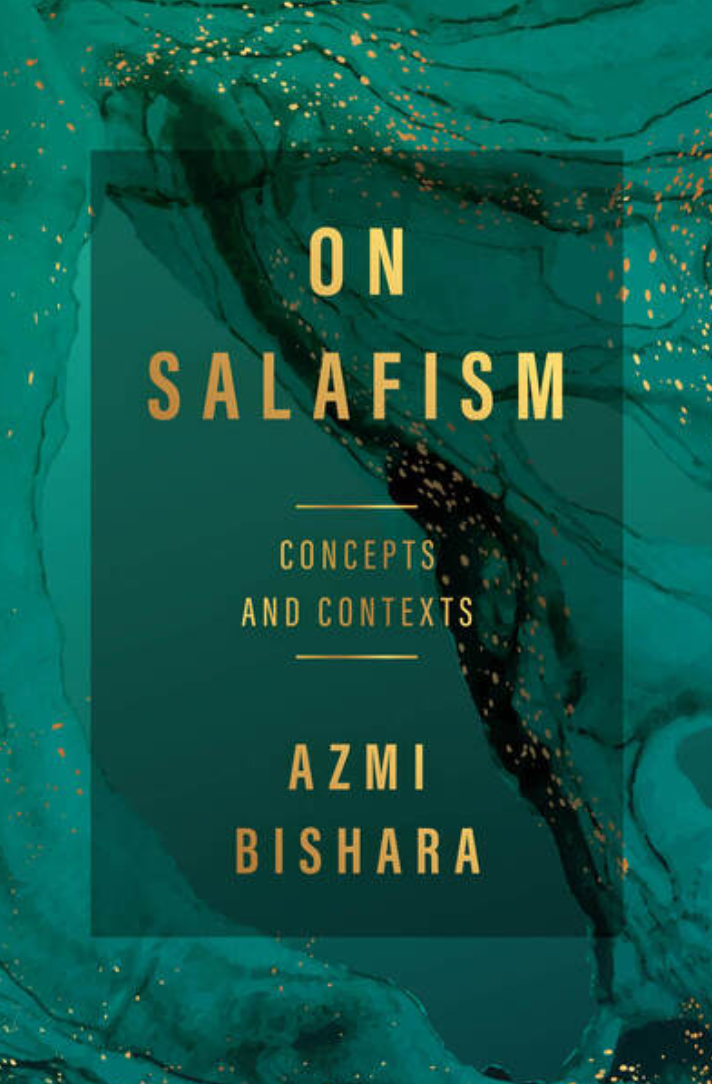Azmi Bishara’s book, On Salafism: Concepts and Contexts, takes a deep dive into Salafism, aiming to clear up some of the confusion around this important but often misunderstood tradition of Islam.[1] Bishara looks into what Salafism really means, how it has changed over time, and its impact today. The book breaks down different views within Salafism and looks at why these differences matter. Bishara’s work helps readers get a clearer picture of Salafism, making it easier to understand its role in both history and the modern world.
Bishara’s book is divided into four relatively long chapters: ‘What is Salafism?’, ‘On Apostasy’, ‘Religious Associations and Political Movements’, and ‘Wahhabism in Context’. The book lays a foundational understanding of Salafism, detailing its key concepts and their application in various contexts, thus offering a broader understanding of the ideological roots of certain jihadi movements. From the start, Bishara critically addresses the terminological confusion surrounding terms such as ‘Salafism’ and how it has evolved and been used in modern times by many Western academics and policymakers. Generally, Salafism is understood to mean exclusive adherence to the Quran, Sunna teachings, and the practices of the first three generations of Islam, while eschewing innovation. Nevertheless, as Bishara argues, the term has transformed over the years across different socio-political contexts, meaning that it has been reproduced in several forms, thereby necessitating the discussion of multiple Salafisms, as opposed to a singular Salafism.
Bishara distinguishes between different types of Salafism, delineating a crucial distinction in contemporary Islamic thought and practice. He defines ‘conservative’ or ‘traditionalist’ Salafism, which describes the Islamic institution in Saudi Arabia, also known as Wahhabism, as an approach that legitimizes current rulers, rooted in emulating the Prophet Muhammad and his companions, along with unwavering obedience and allegiance to an imam—that is, a ruler who governs in accordance with Sharia law. Conversely, Bishara characterizes ‘revolutionary’ jihadi Salafism as a contrasting interpretation that invokes the same early Islamic figures to challenge and discredit incumbent regimes (p. 30). This type of Salafism, associated with groups like al-Qaeda and the Islamic State, often labels Muslim leaders as apostates, even if they publicly conform to Islamic precepts and hold religious titles. Another variant, often overlooked in policy discussions, is ‘Reformist Salafism,’ which, unlike other Salafi traditions, calls for a return to Islam’s roots not for imitation but for inspiration from early teachings when addressing contemporary issues (p. 15). This distinction is vital not only for academic clarification but also for formulating effective policies to address the phenomenon.
Chapter two engages with one of the most fundamental and consequential concepts in Islam, namely takfir or apostasy.[2]Building on the arguments presented in the first chapter about the heterogeneity of Salafism, Bishara demonstrates that not only do different strands of Salafism apply various methods to excommunicate others and legitimize violence against them, but even within a particular strand of Salafism, there exist contradictions on how to apply the concept. In theory, Salafi doctrine identifies ignorance, coercion, and unintentional errors as protective against declarations of infidelity among Muslims; however, Bishara points out that there is considerable contention within ‘revolutionary’ jihadi Salafism regarding this, particularly the interpretation of ignorance, as evidenced by al-Qaeda’s position against excommunicating ordinary Shi’a due to religious ignorance, contrasting with its Iraqi affiliate’s refusal of this stance, resulting in widespread violence against the Shi’a community. (P
The third chapter explores the various strands of Salafism and how they are shaped by different socio-political contexts and sometimes unintended intellectual borrowings from other radical groups, both Islamist and secular. Bishara challenges the Salafi narrative of a continuous ideological lineage from their intellectual ancestors, such as Ahmad Ibn Hanbal (780–855 CE), Ibn Taymiyya (1263–1328 CE), and Muhammad Ibn Abd al-Wahhab (1703–1792), noting that followers and ideologues have historically reinterpreted the teachings of these figures, and often and reproduced a much radical version of their work (p. 64). This observation counters orientalist views on the static nature of not just Salafism but also Islam as a ‘discursive tradition,’ as Talal Asad describes. It also disputes claims that contemporary Salafism is merely a revivalist movement, arguing instead that Islamist movements arising in the modern context of nation-states and modernization are indeed contemporary, addressing current issues through historical lenses, yet remain distinctly modern. (p. 79)
The final chapter scrutinizes Wahhabism as a version of Salafism derived from the intellectual synergy between Ahmad Ibn Hanbal (780–855 CE) and Muhammad Ibn Abd al-Wahhab (1703–1792). Significantly, Bishara demostarte the reasons behind the successful expansion of Abd al-Wahhab’s initially marginal religious call, which came to dominate and represent Saudi Arabia’s religious establishment. He attributes this success to the political alliance between the Saudi rulers of the time and Muhammad Ibn Abd al-Wahhab, which empowered the latter to spread his teachings, and to the weakness of religious institutions and traditions in Saudi Arabia’s rural areas, enabling such teachings to thrive (P.127). This sociological analysis offers a more nuanced comprehension of the interplay between religion and society, acknowledging the role of religious belief while also considering a spectrum of additional factors.
The book is conceptually rich and crucial for scholars of Salafism and jihadism. Yet, it would benefit from additional citations, particularly for minor arguments made by the author. Despite this, its insightful analysis and depth of knowledge make it a valuable contribution to the field.
[1] Bishara, Azmi. 2022. On Salafism: Concepts and Contexts. Stanford: Stanford University Press.
[2] In jihadism literature, the term ‘apostasy’ is frequently translated as ‘excommunication’ to provide a more precise and contextually relevant meaning within Islamic doctrinal discussions. While apostasy typically describes the act of abandoning Islam, excommunication denotes the process through which jihadis legitimize violence against individuals they consider to be excommunicated.


